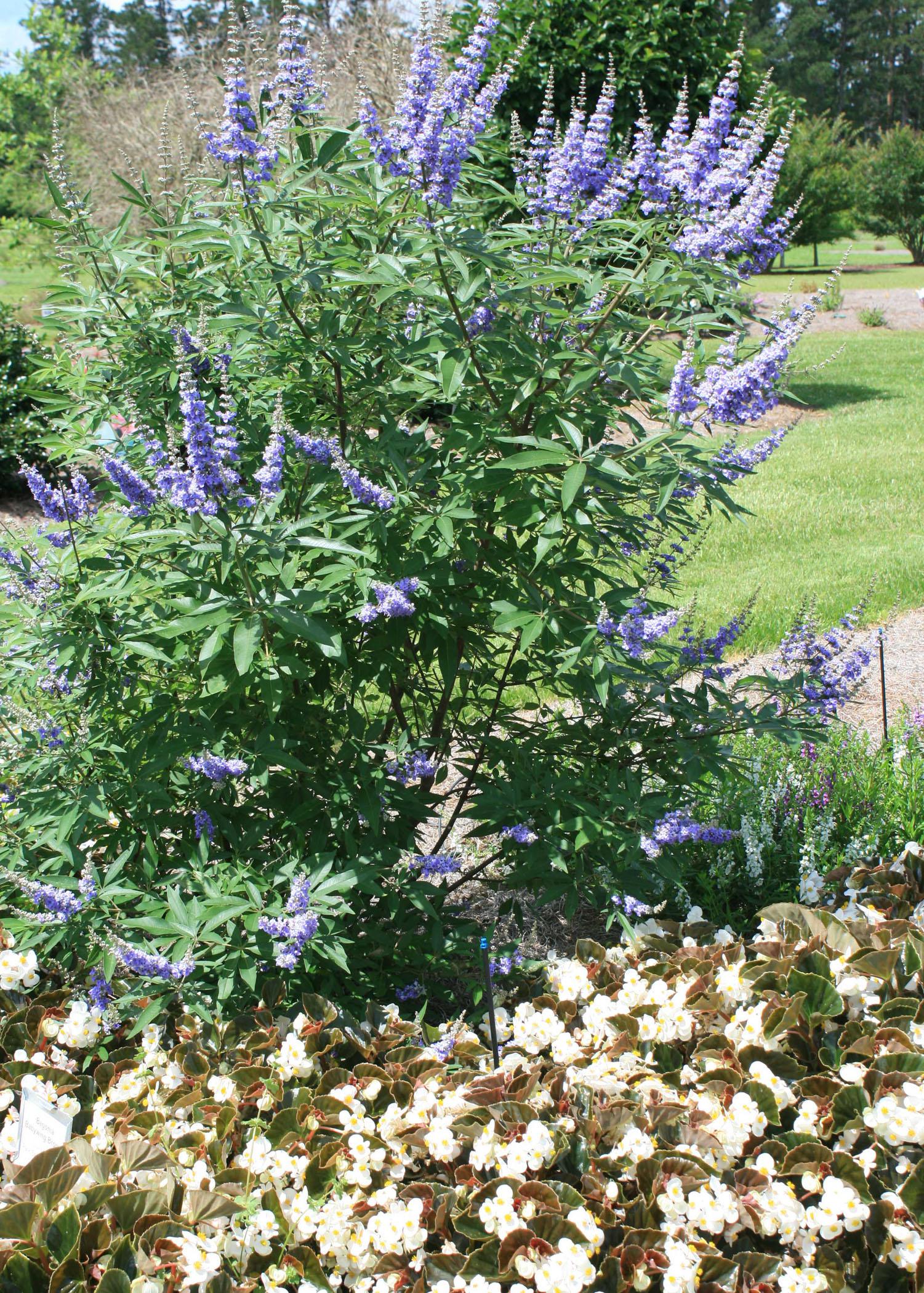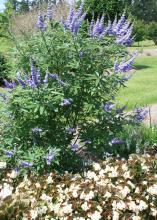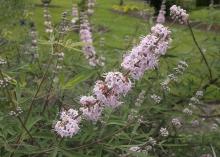Information Possibly Outdated
The information presented on this page was originally released on June 9, 2014. It may not be outdated, but please search our site for more current information. If you plan to quote or reference this information in a publication, please check with the Extension specialist or author before proceeding.
Vitex offers color on state's hottest days
Now that the truly hot days of summer have arrived, vitex is ready to show its colors. This is one of the few plants that make Mississippi gardeners and nongardeners alike stop and take notice.
Many people call with questions about the beautiful, blue flowering shrubs we have at the Mississippi State University Coastal Research and Extension Center in Biloxi. Whenever I need to take a little break, the gorgeous purplish-blue flowers of the vitex right outside my window provide an ideal location.
Vitex flowering begins around Memorial Day on the Gulf Coast and soon afterwards in north Mississippi. The main flowering period lasts up to six weeks, but the show continues sporadically throughout the summer.
The flowers, or panicles, are composed of many small, individual flower clusters. These panicles can be up to 18 inches long in some varieties. Most flower colors vary from lavender to lilac to pale violet. The color can even be a brilliant, nearly fluorescent blue. During the initial flush, the show of flowers may resemble a hazy blue or purplish cloud. On days when there is just the gentlest breeze, you can enjoy the delicate, slightly floral scent.
Shoal Creek is an improved selection that is worth seeking out at garden centers and nurseries. The spring and summer flush of flowers is more vigorous, and the flower color is a more intense and deeper blue than the regular species.
The flower color is not limited to the standard bluish purple. There are some pretty pink selections available. Pink Sensation produces clear, light-pink flowers. While the 4- to 6-inch-long panicles are not as big as some other vitex varieties, the abundant, clear, light-pink panicles are produced all summer long.
The leaves are arranged opposite from the blooms on the distinctly square stems. They grow in clusters, with five to nine finger-like leaflets radiating from a single point. When crushed, the stems and foliage smell sweet. The foliage is dark gray-green on top and bluish gray underneath. When mature, the leaves have slightly fuzzy bottoms.
Vitex tolerates our hot and humid weather extremely well, making this an outstanding small tree for Mississippi landscapes. This is also a good plant for the droughty periods we have each summer.
While vitex can be grown as a single-trunked tree, I think it is more attractive in the landscape when grown as a multitrunk specimen. Vitex tolerates a wide range of pruning styles. It can be easily maintained as an 8- to 10-foot small tree. Pruning promotes compact branching and results in a thicker, bushier plant. Since vitex flowers on new wood (current season’s growth), flowering is actually encouraged and enhanced. A neighbor of mine cut his small vitex tree back to the ground last fall. The plant started growing back this spring and is now a beautiful 3-foot-tall vitex bush. If allowed to grow naturally, it will grow up to 20 feet tall and wide.
Plant the vitex in partial shade to full sun for best flowering performance. Make sure the planting bed has well-drained soil, but the plants will tolerate a wide variety of soil conditions and textures.
Vitex is a spectacular specimen plant in the landscape. It is particularly well suited to be grown in a large container near a patio or other outdoor living area, but be aware that it can bring in bees and other pollinating insects. It can also attract butterflies and hummingbirds to gardens and landscapes. So plant one today, and sit back and enjoy the view.









